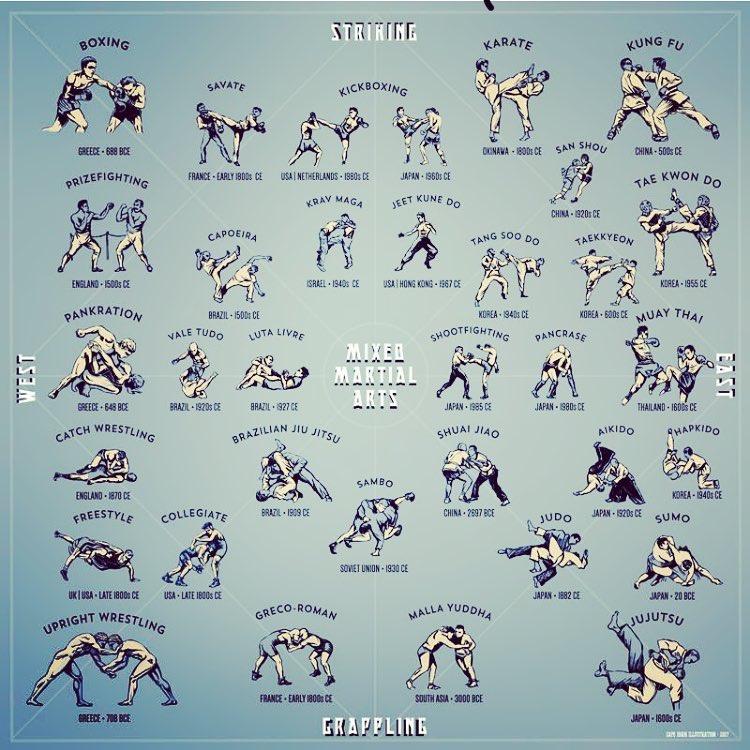The Chronicle And Growth Of Martial Arts: An Exam Of Its Historic Origins And Advancement Into Modern Techniques
The Chronicle And Growth Of Martial Arts: An Exam Of Its Historic Origins And Advancement Into Modern Techniques
Blog Article
Web Content By-Clemons William
Step into the globe of martial arts, where ancient origins and modern methods collide in an exciting trip of self-control and self-discovery.
As you delve into the background and advancement of this exciting art form, prepare to be astounded by the social influences, technical developments, and extensive philosophy that have formed it over centuries.
From the battlegrounds of ancient civilizations to the training premises these days, martial arts have actually stood the test of time, frequently adapting and growing.
how often should i practice martial arts , each activity, carries with it the weight of countless years of practice and wisdom, passed down with generations. This is a tale of resilience, of warriors that looked for not only physical prowess, but additionally inner strength and consistency.
Join us on this impressive expedition as we reveal the keys, the tales, and the transformational power of martial arts.
Prepare yourself to be motivated, challenged, and for life altered by the history and development of martial arts.
Social Influences on Martial Arts
As you explore the history and development of martial arts, you'll quickly uncover the interesting ways in which cultural influences have shaped these fight methods.
From how martial arts change kids life of China and India to the a lot more recent growths in Japan and Brazil, martial arts have been greatly influenced by the cultures in which they originated.
For example, Chinese martial arts, such as Martial Art and Tai Chi, are deeply rooted in the philosophy of Taoism and the concept of Yin and Yang.
On the other hand, Japanese martial arts, like Martial arts and Judo, show the samurai warrior traditions and the worths of discipline and honor.
Similarly, Brazilian fighting style, Capoeira, combines aspects of African dancing and songs, showing the social heritage of African servants in Brazil.
These social affects not just provide each martial art its unique qualities yet additionally give a much deeper understanding of the historical and social contexts in which they progressed.
Technical Innovations and Martial Arts
With the rise of advanced weaponry and innovative training tools, you've been able to improve your abilities and adjust to the ever-changing battle landscape.
https://cristianlubfg.blogthisbiz.com/36084543/a-comparative-research-study-of-martial-arts-and-various-other-sports-insights-right-into-why-it-is-the-suitable-activity-for-youngsters have revolutionized the method martial arts are practiced and educated. Virtual reality simulations currently enable you to learn realistic battle situations without the risk of physical damage. High-speed cameras catch every move, allowing you to evaluate and excellent your methods. Wearable devices check your heart rate, breathing, and muscle activation, offering instantaneous responses on your performance.
Furthermore, the development of customized equipment, such as resistance bands and agility ladders, has actually enabled you to boost your rate, strength, and agility. These technological advancements have not only made training much more effective but have likewise pushed the boundaries of what is possible in martial arts, enabling you to reach brand-new heights in your method.
The Philosophy and Principles of Martial Arts
The viewpoint and concepts of martial arts are deeply rooted in shaping your frame of mind and instilling technique, emphasis, and respect in your technique.
1. State of mind: Martial Arts educates you to establish a strong and resilient way of thinking. It enables you to conquer obstacles both on and off the mat, pressing your limitations and standing firm when faced with hardship.
2. Technique: Martial Arts demands self-control and self-constraint. With normal training and adherence to rigorous guidelines and strategies, you learn to regulate your impulses and create a solid work principles.
3. Focus: Martial Arts needs extreme focus and focus. By training your mind to be existing in the moment, you enhance your capability to react swiftly and effectively during combat scenarios.
4. Regard: Martial Arts highlights regard for oneself, teachers, educating companions, and opponents. It instructs you to value the skills and experiences of others, fostering a sense of sociability and sportsmanship.
martial arts drills at home on completing your trip with the fascinating globe of martial arts! Throughout this exploration, you have witnessed the abundant background and remarkable advancement of these combat practices.
From their old beginnings to the contemporary methods we see today, martial arts have actually been shaped by cultural influences.
The integration of technology has actually additionally played a significant role in reinventing the means martial arts are instructed and practiced in the here and now day.
Nevertheless, it is very important to keep in mind that martial arts are more than simply physical battle. They incorporate extensive approaches and guiding concepts that go beyond the simple act of fighting.
Take a minute to reflect on this anachronistic journey and appreciate how the tradition of martial arts remains to flourish in the present, transcending time and boundaries.
